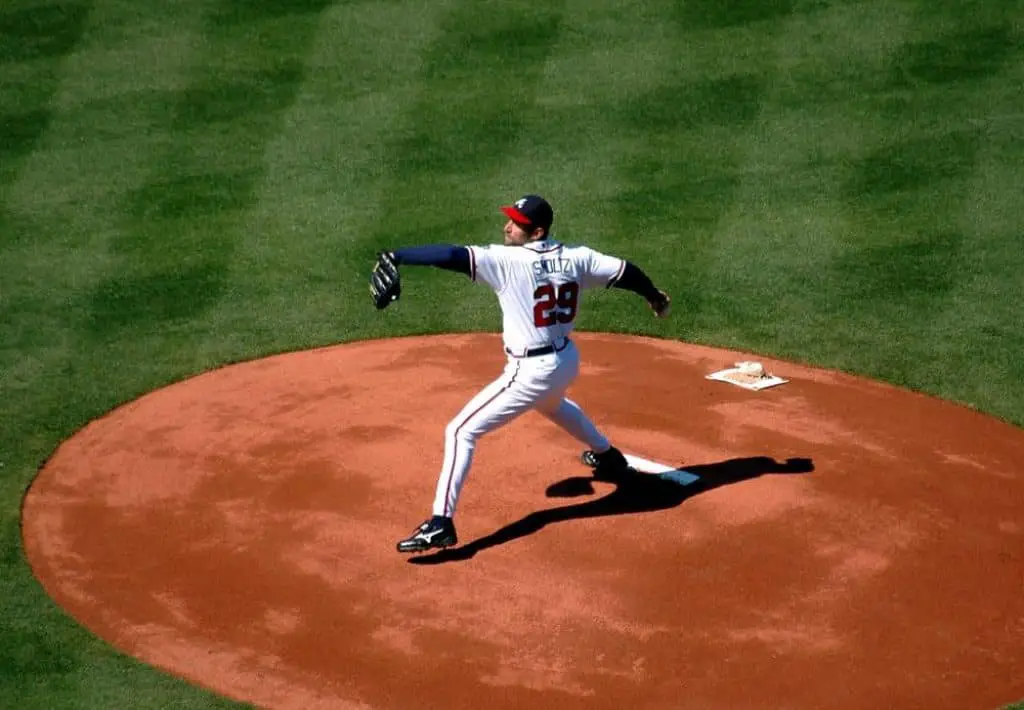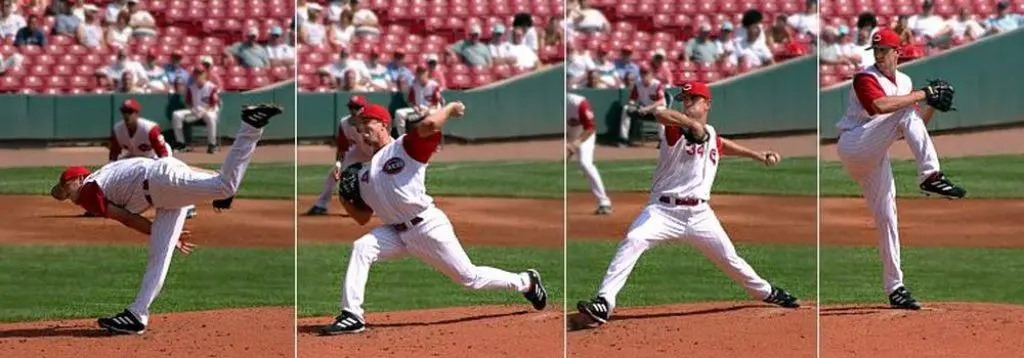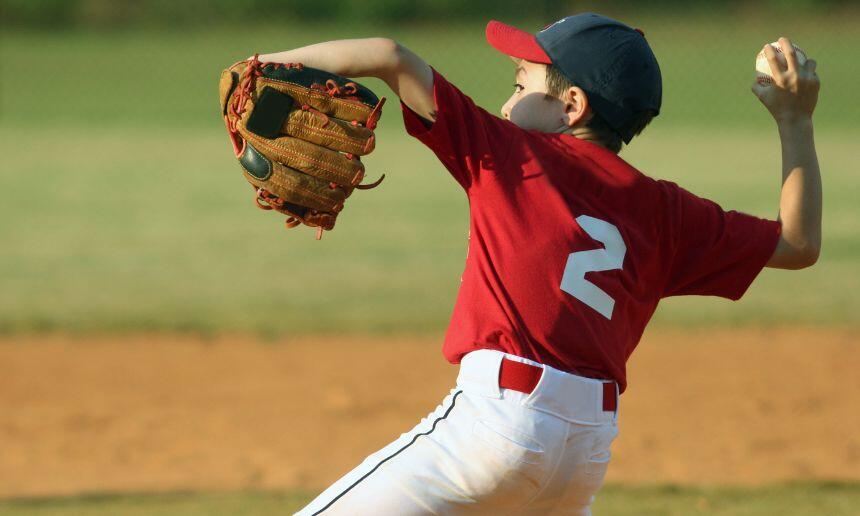Can You Pitch Underhand in Baseball? (Solved!)
The importance of the pitcher’s role in baseball can not be overstated.
No matter how great your hitting lineup is, you can not win a game without good pitching.
Of course, becoming a solid pitcher is not easy.
To be able to regularly deceive hitters and keep them on their toes, pitchers have at least a couple of different pitches in their arsenal.
These may include fastballs, curveballs, sliders, sinkers, splitters, or changeups.
Some even use one of the quirkier throwing mechanics, like sidearm or submarine pitches.
However, nowadays, you can hardly ever see an underhand pitch in baseball.
The original way of throwing a baseball is now almost extinct. Most people are not even sure if it’s legal in the modern game.
If you’re interested to learn can you pitch underhand in baseball, keep reading.
Table of Contents
Can You Pitch Underhand in Baseball?

Basically, there’s nothing stopping you from pitching underhand in a baseball game. There’s no mention of prohibiting this type of throwing the ball in any baseball rulebook.
Even though you’ll likely never see an underhand pitch in baseball, it’s still perfectly legal.
So, the answer to the question can you pitch underhand in baseball is a clear yes.
However, in modern baseball, pitching underhand will likely put you at a serious competitive disadvantage.
With the way baseball is played nowadays, underhand pitching just can’t provide good enough pitches to regularly get outs.
That’s why the vast majority of baseball pitchers, on all levels of the game, use the overhand pitch.
The different mechanics of the underhand throw makes it much more difficult, although not impossible, to be a successful baseball pitcher.
Benefits of Pitching Underhand
While it’s hard to achieve the speed and power of overhand pitches when throwing underhand, this technique still has some benefits.
First of all, the underhand pitch is much easier on the pitcher’s body.
Pitching overhand puts a lot of strain on the arm, with shoulder and elbow taking most of the toll.
As the underhand pitching motion is more natural, with the arm closer to the body, these throws put a lot less pressure on the elbows and shoulders.
Being more natural, the underhand throw is also much easier to learn.
The mechanics and the motion used are rather similar to what we do when we throw any kind of object, not only the baseball.
Finally, what they lose in speed, underhand pitches make up in better accuracy in some cases.
They’re particularly more precise when throwing to a closer and shorter target.
Why do Baseball Pitchers Throw Overhand?

If you’ve ever seen a baseball game, then you know that all pitchers throw using the overhand technique.
There are several reasons for this.
Most of them have to do with the layout of the baseball field. In baseball, pitchers throw from the raised mound.
Also, there’s a significant distance from the mound to the home plate, unlike in softball where the pitches are done underhand.
This dictates that baseball pitchers need to have more speed and power to their pitches to be able to put the batter out.
More Speed
Throwing overhand allows pitchers to use elevation, height, and gravity in order to get as much speed as possible on their pitches.
Basically, with the raised mound, baseball pitchers are throwing downhill. Pitching overhand, they can reach speeds of 100 mph.
Underhand throws rarely can go over 70 mph.
Fastballs that slow would, in many cases, result in the ball being knocked out of the park.
Quicker Windup
Underhand pitches have a long windup and take longer to perform. With runners on the base, pitchers have to perform their pitch as fast as possible.
Using the overhand windup and deliver like in softball would simply take too much time.
It would allow runners to steal bases on almost every pitch.
The difference in rules makes the underhand pitch viable in softball, but, in baseball, it would put the pitcher at a serious disadvantage.
Lack of Proper Training
Another reason why baseball pitchers throw overhand is the fact that they don’t have someone to teach them.
Everyone appreciates and tried to develop diverse pitchers with several different pitches.
However, it’s hard to find a coach in Little League, high school, college, pros, or a parent that is familiar with the mechanics of underhand pitching.
That’s why young players are discouraged from learning it and persuaded to learn only overhand pitches.
When did Baseball Go to Overhand Pitching?

Originally, all pitches in baseball were done underhand. In the early days of baseball, the role of the pitcher was not so important as it is today.
Their main purpose was to just serve up balls for the batters to put in play.
Audiences at the time mostly enjoyed seeing good fielding plays and plenty of base running.
However, pitchers quickly realized by raising their release point above the allowed limit they would get faster and more powerful pitches.
The rules changed to accommodate this trend, and in 1872, the sidearm pitches became legal.
Still, the pitchers continued to raise their release eventually leading to the abolishment of pitching rules.
Since 1884, all pitching restrictions were removed paving the way for the dominance of overhand throws.
Underhand pitching survived for a while under the new rulebook before becoming almost completely extinct.
Conclusion
So, there’s nothing stopping baseball pitchers from throwing underhand.
However, with the way the game has developed, these pitches became inferior to the overhand style.
Some pitchers still use sidearm or submarine techniques, but they are mostly relegated to being relievers.
It’s been a long, long time since the starting MLB pitcher threw anything else than an overhand pitch.
The classic underhand pitches are practically non-existent in modern baseball.
With the rules of baseball as they are, pitching underhand makes getting an out much more difficult.
And, there’s a little chance of this changing any time soon.
Conventional wisdom among baseball coaches is that teaching the young pitchers an inferior technique is simply a waste of time.




